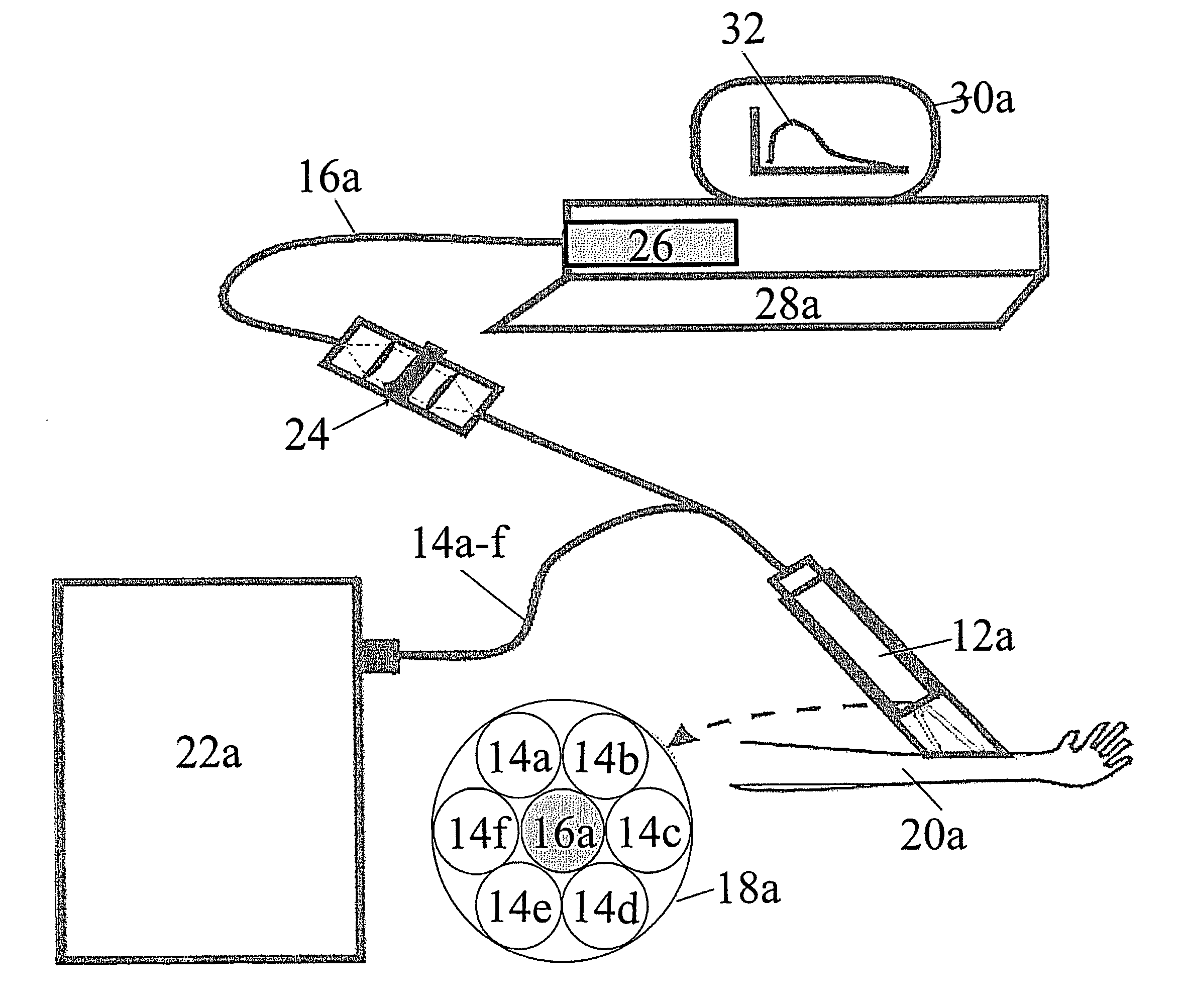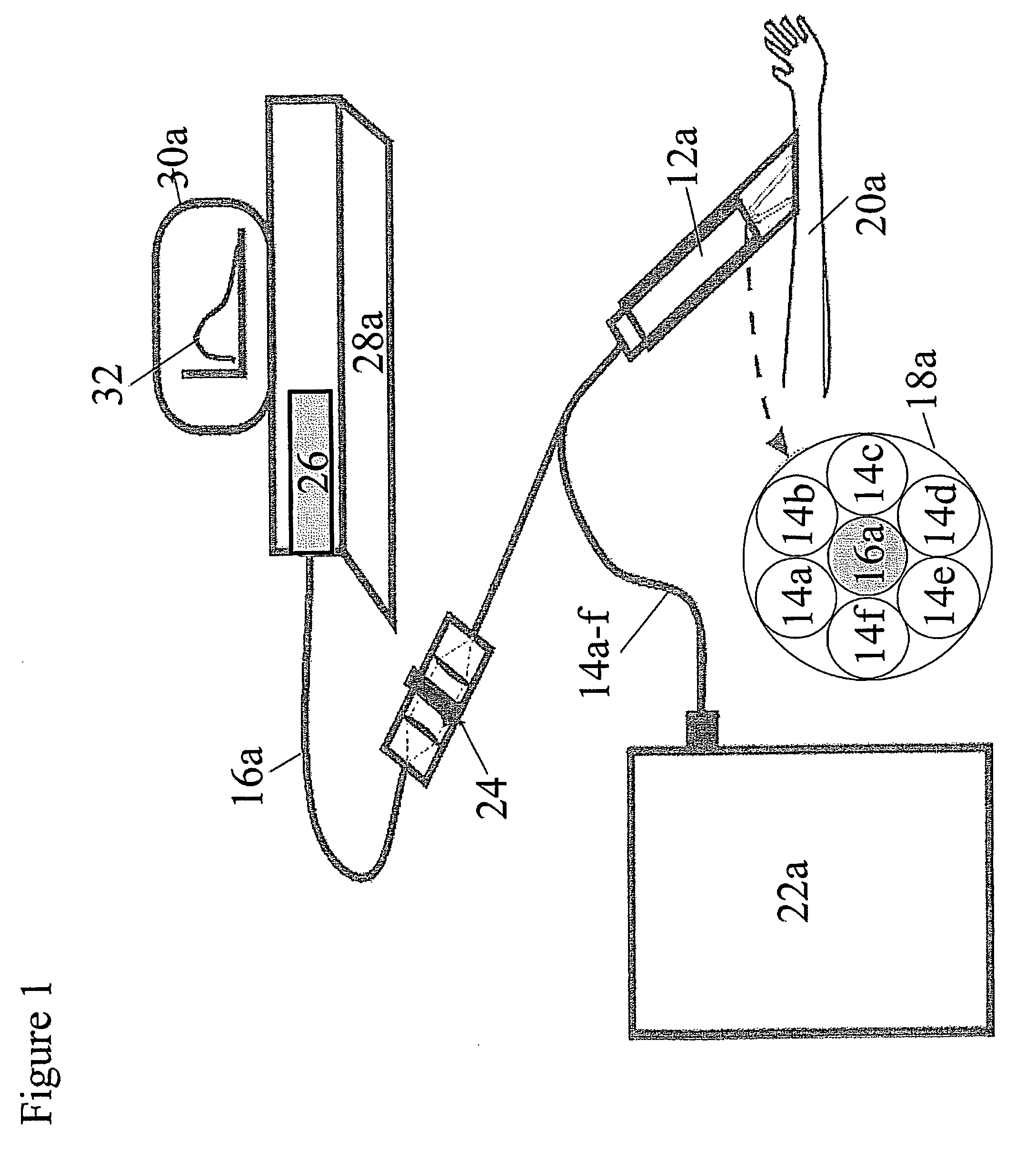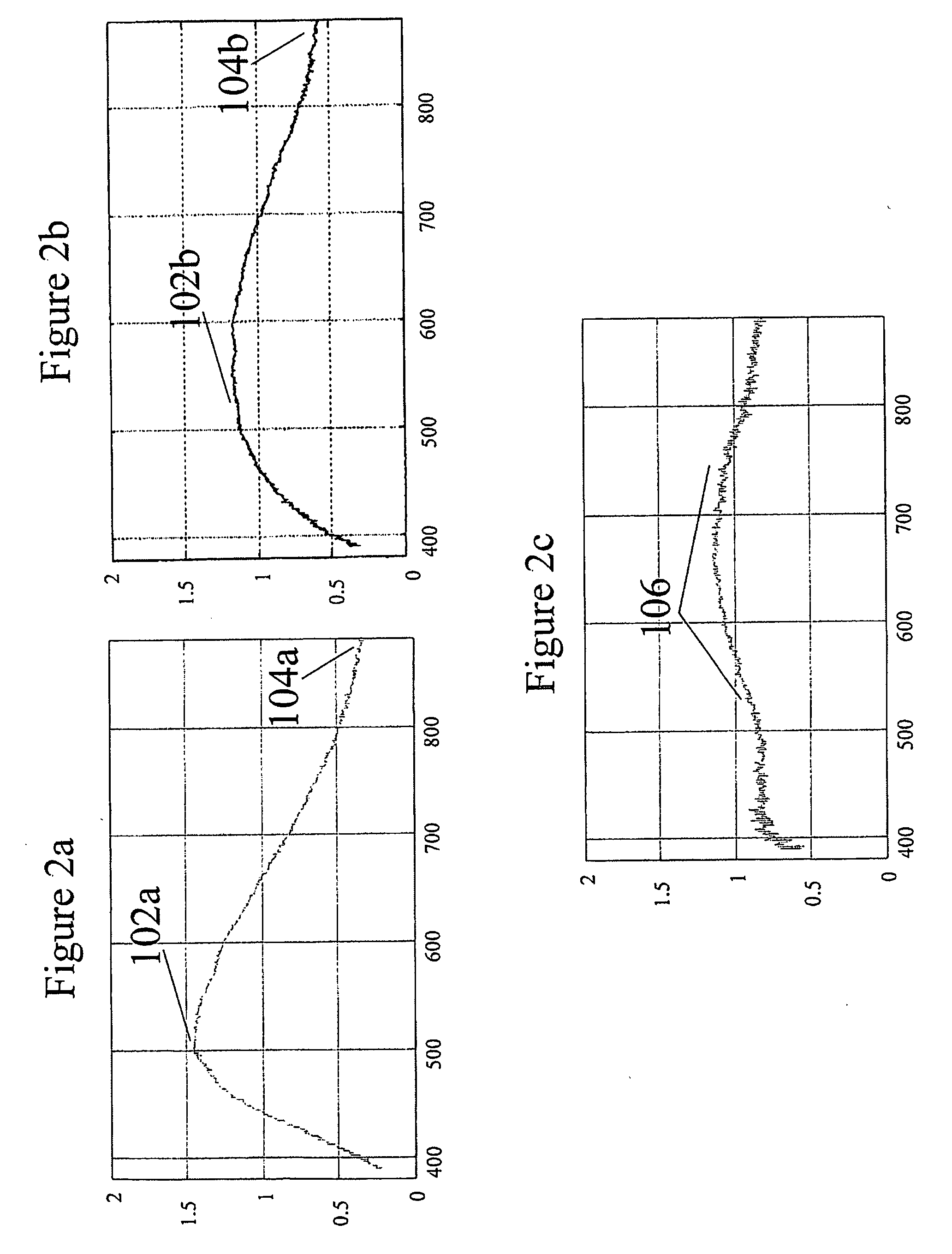Combined visual-optic and passive infra-red technologies and the corresponding systems for detection and identification of skin cancer precursors, nevi and tumors for early diagnosis
a technology of infra-red and visual-optic technology, applied in the field of non-invasive methods and devices for identifying pathological skin lesions, can solve the problems of limited number of sights that can be biopsied, requiring intrusive tissue removal, and a large number of such expensive painful tests
- Summary
- Abstract
- Description
- Claims
- Application Information
AI Technical Summary
Benefits of technology
Problems solved by technology
Method used
Image
Examples
second embodiment
[0073]FIG. 6 illustrates the current invention. In the embodiment of FIG. 6, the skin 20b of a patient is investigated using a probe 12b having an illumination fiber 14g connected to a light source 22b. Probe 12b also contains a pick-up fiber 16b connected to a spectrometer 502. Spectrometer 502 measures simultaneously measures radiation in multiple bands in the visible, NIR and MIR bands using a detector system 504 which may be an array of multiple detectors, each detector measuring a different frequency band. Alternatively, detector system 504 can be a interferometer producing an interference spectrum which is interpreted by a processor, which is a PC 28b by means of Fourier transform analysis. Under any conditions the measurements of detector system 504 are sent to PC 28b via interface electronics and PC 28b displays the results as a spectrogram on a monitor 30b. PC 28b also is connected to a first control cable 506a to control light source 22b to provide illumination either in t...
third embodiment
[0074]FIG. 7 shows a scanner assembly 600 according to the current invention Particularly scanner assembly 600 includes an active visible sensor assembly 602, which is a bundle of five optical fibers, four illumination fibers 14h-14k and a pick up fiber 16c shown in cross section 18b. Visible light does not appreciably penetrate skin, therefore the visible sensor assembly 602 is focused by lens 610c onto a point 612 on the surface of skin 20c. Scanner assembly 600 also includes two passive MIR sensor assemblies 602604a and 604b, which are focused by lenses 610a and 610b respectively from opposite angles at a point 7 mm below point 612. Thus as scanner assembly moves along in scanning direction 606, visible sensor assembly 602 detects discoloration (or fluorescence) of the skin surface along a line, while simultaneously MIR sensor assemblies 604a and 604b measure black body MIR radiation from two directions along the same line in order to gauge the depth of a lesion 614. Thus the loc...
PUM
 Login to View More
Login to View More Abstract
Description
Claims
Application Information
 Login to View More
Login to View More - R&D
- Intellectual Property
- Life Sciences
- Materials
- Tech Scout
- Unparalleled Data Quality
- Higher Quality Content
- 60% Fewer Hallucinations
Browse by: Latest US Patents, China's latest patents, Technical Efficacy Thesaurus, Application Domain, Technology Topic, Popular Technical Reports.
© 2025 PatSnap. All rights reserved.Legal|Privacy policy|Modern Slavery Act Transparency Statement|Sitemap|About US| Contact US: help@patsnap.com



